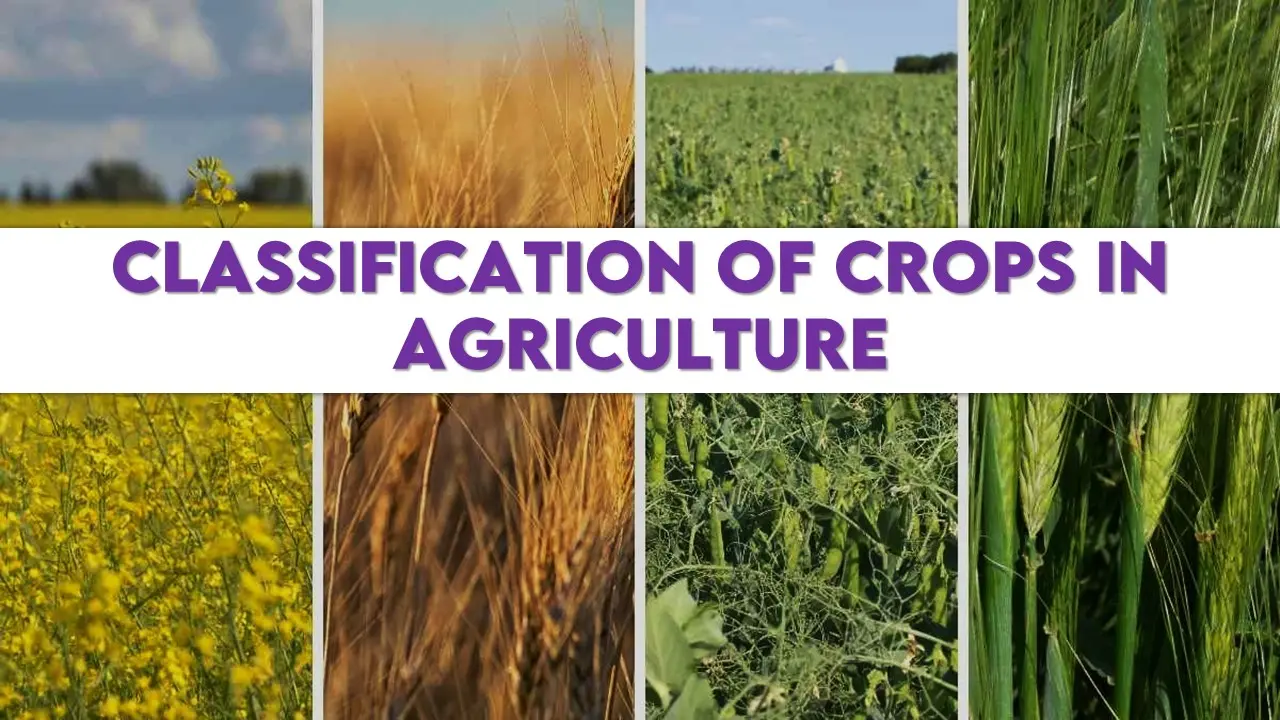- Ce sujet est vide.
- AuteurMessages
- mars 26, 2025 à 10:52 am #607277

Crop plants are cultivated for a multitude of purposes, forming the backbone of our food supply, providing essential raw materials for industries, and contributing to various aspects of human life.
Classifying these plants based on their primary usage offers a practical and economically relevant way to understand their importance and applications. This article explores several key categories of crop plants based on how they are utilized by humans and industries.
1. Food Crops
The most fundamental category of crop plants is food crops, which are grown primarily for human consumption. This broad category can be further subdivided based on the specific edible part and nutritional contribution.
a. Cereals: These are grasses cultivated for their edible starchy grains, which are a primary source of carbohydrates worldwide. Examples include rice, wheat, maize, barley, and oats.
b. Pulses (Legumes): These crops are grown for their edible seeds, which are rich in protein. Examples include beans, lentils, chickpeas, and soybeans.
c. Fruits: These are the mature ovaries of flowering plants, containing seeds and often a fleshy part. They are valued for their vitamins, minerals, and fiber. Examples include apples, bananas, oranges, and mangoes.
d. Vegetables: This is a diverse group of plants cultivated for their edible parts, which can include roots, stems, leaves, flowers, and fruits (used culinarily as vegetables). Examples include carrots, spinach, broccoli, tomatoes, and peppers.
e.Sugar Crops: These crops are grown specifically for the extraction of sugar, primarily sucrose. Examples include sugarcane and sugar beets.
f. Oilseed Crops: These crops are cultivated for their seeds, which are rich in vegetable oils used for cooking, industrial purposes, and animal feed. Examples include soybeans, sunflowers, rapeseed, and groundnuts.
g. Nut Crops: These are plants grown for their edible nuts, which are fruits consisting of a hard shell and a kernel. Examples include almonds, walnuts, cashews, and pecans.
2. Fiber Crops
Fiber crops are cultivated for the fibers obtained from their stems, leaves, or fruits, which are used to make textiles, ropes, paper, and other materials.
a. Stem Fibers: These fibers are extracted from the stems of plants. Examples include cotton, flax (linen), hemp, and jute.
b. Leaf Fibers: These fibers are obtained from the leaves of plants. Examples include sisal and abaca (Manila hemp).
c. Fruit Fibers: These fibers are harvested from the fruits of plants. An example is coconut fiber (coir).
3. Forage Crops
Forage crops, also known as fodder crops, are grown specifically to feed livestock. These crops are typically high in nutritional value and are often grazed directly by animals or harvested and processed into hay or silage.
a. Grasses: Various grasses are cultivated for forage, such as alfalfa, clover, and various pasture grasses.
b. Legumes: Certain legumes are also important forage crops due to their high protein content.
4. Industrial Crops
Industrial crops are grown for various industrial uses, providing raw materials for manufacturing processes.
a. Rubber Crops: These crops, primarily the rubber tree, are cultivated for the latex used in the production of natural rubber.
b. Biofuel Crops: Certain crops are grown specifically for the production of biofuels, such as ethanol (from sugarcane or maize) and biodiesel (from oilseed crops like soybeans or jatropha).
c. Timber and Wood Crops: While often considered forestry, some tree species are cultivated as crops for their timber and wood products.
d. Medicinal and Aromatic Crops: These crops are grown for their medicinal properties or aromatic compounds, used in pharmaceuticals, perfumes, and flavorings. Examples include herbs like lavender and spices like ginger.
e. Tobacco: This crop is cultivated for its leaves, which are processed for use in cigarettes and other tobacco products.
5. Ornamental Crops
While not always considered in the same vein as food or industrial crops, ornamental crops are an important agricultural sector focused on plants grown for their aesthetic value. This includes flowers, shrubs, and trees grown for landscaping, decoration, and floriculture.
Classifying crop plants based on their usage provides a valuable framework for understanding their economic significance and the diverse ways in which they contribute to human society. From providing essential nutrition to supplying raw materials for industries, each category plays a crucial role in our lives.
Understanding these classifications helps in focusing agricultural research, developing specialized farming practices, and appreciating the multifaceted importance of cultivated plants.
Read Also: Morphological Classification of Crop Plants
- AuteurMessages
- Vous devez être connecté pour répondre à ce sujet.

